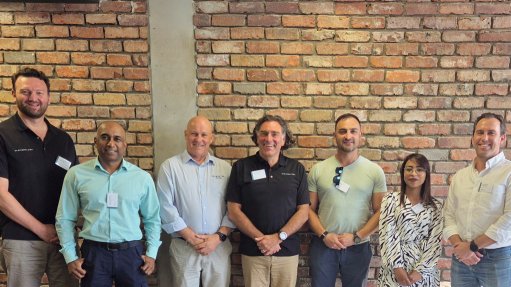Nationalise pensions
To nationalise or to prescribe? In South Africa, a case of ‘potato potato’, as the saying goes, which I appreciate, makes no sense when writing it. Although incorrect, altering it to ‘potato potahto’ brings the point across. Is it also a case of a rose by a different name smelling just as sweet?
To nationalise is to transfer an asset from private to State (government) ownership or control, while nationalisation refers to a government taking ownership of a private asset, generally without compensation. An asset is something of value.
If you are confused by the introduction, just bear with me for a second and, while doing so, reflect on the word ‘assets’. In 2019 election manifesto of the governing African National Congress, titled ‘Let’s grow South Africa together – A people’s plan for a better life for all’, ‘assets’ appears five times: “growing the productive assets of our people”, “prescribed assets on financial institutions’ funds”, “to build productive assets for our people”, and “without assets”.
Evidently, government wants to ‘grow’ and ‘build’ ‘productive assets’ for its people, particularly for those ‘without assets’. These are all noble socialist objectives. If that is a bit too frank for your liking, then let me use the phrase ‘noble socioeconomic objectives’. These noble objectives are built on assumptions. It is not for government to ‘grow’ and ‘build’ ‘productive assets’. That is not the reason governments are elected. Unfortunately, the only people who benefit from the accumulation and growth of assets, which is without question a highly productive endeavour, are the politicians themselves – this is an international trend. As one casts one’s eyes across the world, the single most universal financially rewarding profession is politics. The challenge, of course, is the eventual collision between government and business interests. But I digress.
The headline ‘Nationalise pensions’ is quite clear in terms of what the writer intends to put across. However, if the headline reads ‘Prescribe assets, will it evoke the same reaction or emotion? Somehow, I doubt it.
What are ‘prescribed assets’? A piece by journalists Lameez Omarjee and Jan Cronje, which was published on Fin24 and was titled ‘Nest egg raid or tool for development? Your guide to prescribed assets’, eloquently articulates what these asset types are. As they explained, the term refers to “a policy where government obliges institutions such as pension funds and insurance companies to invest a part of their funds in government institutions or bonds”. They continued: “For detractors, prescribed assets are a way for government to raid retirement funds to prop up unattractive investments, such as heavily indebted State-owned entities (SOE). They warn that obliging funds to invest could artificially distort the market by diverting funds away from more appealing investments. For supporters, the requirement to invest in specific government institutions or bonds is a quick way to boost the flow of funds to important entities, which can help grow the economy and create jobs.”
Returning to assumption – evidently, government makes two assumptions in its approach when it comes to prescribed assets. The first is that it can ‘grow’ and ‘build’ ‘productive assets’. What are ‘productive assets’? Productive assets are assets with the ability to generate profits and cash flow, while assets are basically entities that hold economic value and can be converted into cash. This begs the question: Is it government’s business to generate profits and returns?
Just in case you believe that the South African government’s wanting to be involved in profit generation is progressive, think again. It is rather a case of going back to the future.
‘Prescribed assets’ were first introduced in South Africa in 1956, when pension funds were required to invest their assets into government and SOE bonds. In 1988, the Jacobs Committee was appointed to investigate prescribed assets and subsequently recommended that the policy be abolished. Yet, 31 years later, here we are again.
Article Enquiry
Email Article
Save Article
Feedback
To advertise email advertising@creamermedia.co.za or click here
Comments
Press Office
Announcements
What's On
Subscribe to improve your user experience...
Option 1 (equivalent of R125 a month):
Receive a weekly copy of Creamer Media's Engineering News & Mining Weekly magazine
(print copy for those in South Africa and e-magazine for those outside of South Africa)
Receive daily email newsletters
Access to full search results
Access archive of magazine back copies
Access to Projects in Progress
Access to ONE Research Report of your choice in PDF format
Option 2 (equivalent of R375 a month):
All benefits from Option 1
PLUS
Access to Creamer Media's Research Channel Africa for ALL Research Reports, in PDF format, on various industrial and mining sectors
including Electricity; Water; Energy Transition; Hydrogen; Roads, Rail and Ports; Coal; Gold; Platinum; Battery Metals; etc.
Already a subscriber?
Forgotten your password?
Receive weekly copy of Creamer Media's Engineering News & Mining Weekly magazine (print copy for those in South Africa and e-magazine for those outside of South Africa)
➕
Recieve daily email newsletters
➕
Access to full search results
➕
Access archive of magazine back copies
➕
Access to Projects in Progress
➕
Access to ONE Research Report of your choice in PDF format
RESEARCH CHANNEL AFRICA
R4500 (equivalent of R375 a month)
SUBSCRIBEAll benefits from Option 1
➕
Access to Creamer Media's Research Channel Africa for ALL Research Reports on various industrial and mining sectors, in PDF format, including on:
Electricity
➕
Water
➕
Energy Transition
➕
Hydrogen
➕
Roads, Rail and Ports
➕
Coal
➕
Gold
➕
Platinum
➕
Battery Metals
➕
etc.
Receive all benefits from Option 1 or Option 2 delivered to numerous people at your company
➕
Multiple User names and Passwords for simultaneous log-ins
➕
Intranet integration access to all in your organisation


















